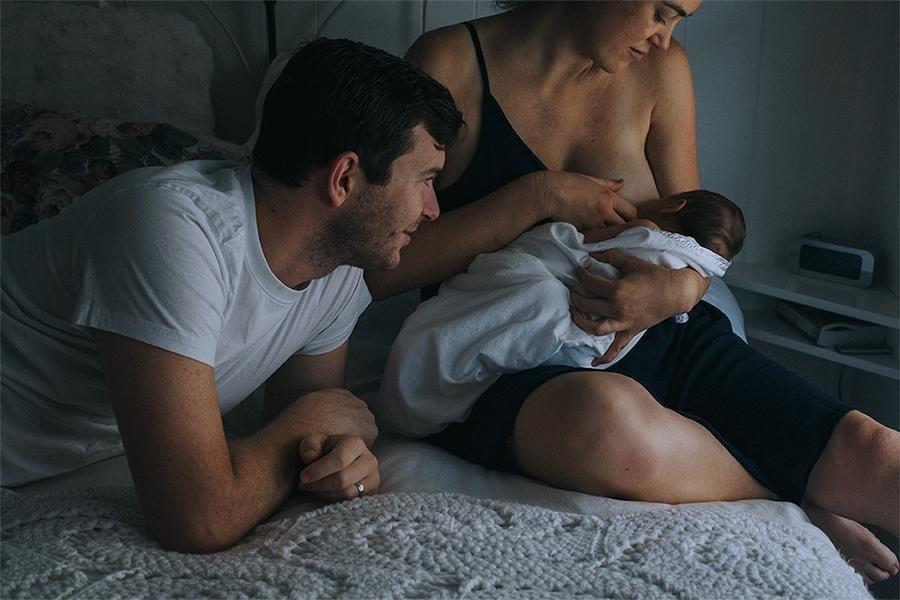BABY
What Is Dream Feeding? And How Do I Do It?
Rested moms know this feeding trick!

Written by
Dr. Harvey Karp

SHARE THIS ARTICLE
PARENT PICKS
Bestsellers
BABY

Written by
Dr. Harvey Karp

SHARE THIS ARTICLE
Bestsellers
If your baby awakes hungry each night, besides boosting daytime milk, it makes sense to boost evening calories by dream feeding your baby. Think of it like topping off the gas tank of your car by filling it to the brim...so there is no need to refuel during the journey ahead. The dream feed will eliminate—or delay—one of the top reasons babies awake through the night: rumbling in the tummy.
Dream feeding is when you rouse your baby—without fully awaking—to feed one more time before you turn in for the night. Babies who go to sleep at 6 and 8 p.m. often awake out of hunger in the middle of the night. Research shows that sneaking in an extra feed between 10 p.m. and midnight usually reduces night awakenings, helping babies stay asleep until a more “reasonable” time of the morning. This can become part of your little one’s regular sleep schedule.
Ready to try it? Follow these steps:
If your baby is sleepy, you may need to rouse her a bit, by changing her nappy, tickling her toes, or cooling her legs/face head with a wet washcloth.
Yes. You always want to burp a baby after a dream feed—or any feed—before putting her back down on the back.
To get your little one back down after the dream feed, the 5 S's (Swaddling, Side/Stomach, Shushing, Swinging, Sucking) can really help.
First, swaddle your baby—if you have not already—and play some rumbly white noise. I recommend playing it all night, but you can turn up the volume as you are putting your baby back down.
In addition to white noise, rhythmic motion makes babies sleepy. SNOO Smart Sleeper, is a responsive baby cot that uses both sound and motion (and a built-in swaddle!) to quickly soothe babies back to sleep after a feed (usually aiding sleep for the whole family).
Other time-tested tricks are rocking in a rocking chair, walking with your baby in your arms, bouncing on an exercise ball, and offering a dummy. (As an added bonus, a bedtime dummy helps lower the risk of sudden infant sleep death, or SIDS.)
As you put your little one back in bed, remember to do the quick "wake and sleep" trick, which teaches your baby to fall asleep on her own.
If your baby frequently awakens around 3:30am in spite of the dream feed and using strong, rumbly white noise, consider setting your alarm to give one more dream feed at 3am. The idea is to pick up and feed your little one before she wakes you, so you are giving her the nourishment she needs, but not rewarding her for waking and crying.
If you have to do this early-morning dream feed, make sure you give a little less milk than usual. If you are nursing, just feed on one side for this second dream feed. If you are bottle-feeding, add double the amount of water the formula directions suggest (just for one feeding) for a few days.
It is important to note that it is dangerous for parents to dilute milk for meals…that leads to malnutrition. Diluting for this wee-hour feed is totally different. The purpose of the extra water is to fill the stomach with enough ounces, but fewer calories. That can help babies sleep through to morning…when they will be hungry and ready to eat again.
Remember, your goal is to provide the same amount of calories in a 24-hour cycle but to shift more of the feedings to awaking hours—this adjustment can significantly improve nighttime sleep! It is best not to talk or cuddle too much at 3:30am. You want to be loving when you feed your baby, but not encouraging her to think that it is time to play.
Your goal with dream feeding is to help your baby sleep from the time you go to sleep through until the morning. All babies are different, so there is no specific age recommendation. My rule of thumb is that you can bid adieu to the dream feed 2-4 weeks after your baby is sleeping well from the time of your dream feed on through to the morning.
Disclaimer: The information on our site is NOT medical advice for any specific person or condition. It is only meant as general information. If you have any medical questions and concerns about your child or yourself, please contact your health provider. Breastmilk is the best source of nutrition for babies. It is important that, in preparation for and during breastfeeding, mothers eat a healthy, balanced diet. Combined breast- and bottle-feeding in the first weeks of life may reduce the supply of a mother's breastmilk and reversing the decision not to breastfeed is difficult. If you do decide to use infant formula, you should follow instructions carefully.